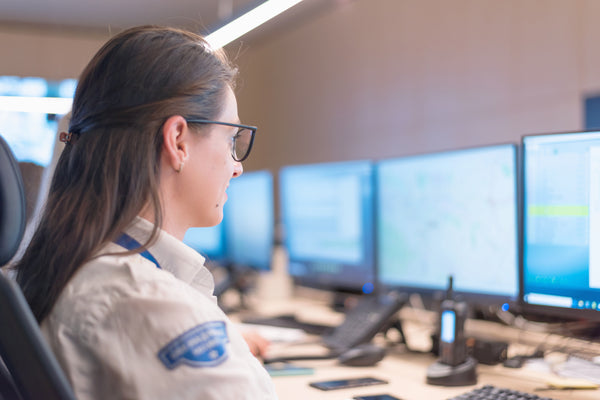In today's fast-paced workplaces, ensuring the safety of employees is paramount. While traditional safety measures have focused largely on external threats and hazards, the emergence of Indoor Positioning Systems (IPS) heralds a new era of workplace safety. These cutting-edge technologies offer precision, real-time tracking, and invaluable insights into employee movements within indoor environments. Let's explore how Indoor Positioning Systems are revolutionizing workplace safety and ushering in a new standard of protection.
Understanding Indoor Positioning Systems
Indoor Positioning Systems utilize a variety of technologies such as Bluetooth, Wi-Fi, RFID, and sensors to accurately determine the location of individuals or assets within indoor spaces. Unlike GPS, which is effective outdoors but less reliable indoors, IPS technologies can pinpoint locations with remarkable precision even in complex indoor environments.

Real-Time Monitoring and Emergency Response
One of the most significant advantages of Indoor Positioning Systems is their ability to provide real-time monitoring of employee locations. In the event of an emergency such as a fire, natural disaster, or security threat, this capability enables swift and targeted response efforts. By knowing the exact location of employees within a building, emergency responders can evacuate individuals efficiently, reducing response times and potentially saving lives.
Preventing Accidents and Improving Workflow
Beyond emergency situations, Indoor Positioning Systems also play a crucial role in preventing accidents and optimizing workflow. In high-risk environments such as manufacturing plants or warehouses, IPS can alert workers to potential hazards or restricted areas in real-time. This proactive approach helps mitigate risks and promotes a safer working environment for all employees.
Furthermore, Indoor Positioning Systems offer valuable data insights that can be leveraged to optimize workplace efficiency. By analyzing employee movement patterns, companies can identify bottlenecks, streamline workflows, and enhance overall productivity.
Personalized Safety Solutions
Indoor Positioning Systems can be tailored to suit the specific needs and challenges of different industries and workplaces. For example, in healthcare settings, IPS can help track the location of medical equipment, monitor patient flow, and ensure compliance with hygiene protocols. In large office buildings, IPS can assist employees in navigating complex layouts, locating meeting rooms, or finding colleagues quickly and efficiently.

Overcoming Challenges and Ensuring Privacy
While Indoor Positioning Systems offer undeniable benefits, they also raise important considerations regarding privacy and data security. Companies implementing IPS must prioritize transparency, consent, and data protection to safeguard employee privacy rights. Clear policies and protocols should be established to govern the collection, storage, and usage of location data, ensuring compliance with relevant regulations and standards.
The Future of Workplace Safety
As technology continues to evolve, the potential applications of Indoor Positioning Systems in enhancing workplace safety are limitless. From improving emergency response times to optimizing operational efficiency, IPS technologies represent a paradigm shift in how we perceive and manage workplace safety.
In conclusion, the power of precision offered by Indoor Positioning Systems is transforming workplace safety in profound ways. By harnessing the capabilities of IPS technologies, organizations can create safer, more efficient, and productive work environments for employees. As we embrace these innovations, the future of workplace safety looks brighter than ever before.
